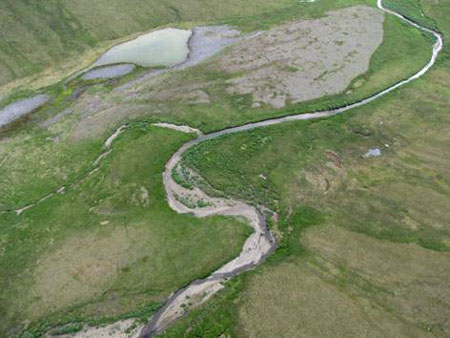
Image above: Aerial image of a portion of the Kuparuk River with no stream flow. North Slope of Alaska..
Photo Credit: Erica Betts.
Fish and wildlife species in the Arctic have developed life history strategies to deal with the extreme climate of the North. In the case of Arctic grayling, these strategies include long life, yearly spawning, and migration. In order to understand how such a species will be affected by a changing climate, we must determine how these adaptive strategies may be at odds with the changing Arctic landscape. Arctic grayling migrate in the spring and early summer to spawning and feeding sites and then in the fall migrate back to overwintering sites. Migration to spawning sites occurs just after break up when rivers are quite swollen from the melting of an entire winter’s worth of snow. Low precipitation and high evapotranspiration rates early in the summer can lead to low water levels and a fragmentation of the hydrologic landscape. This fragmentation creates a barrier to fish migration. The research to be presented here details an attempt to recreate the occurrence of hydrologic barriers to fish migration in the Upper Kuparuk River on the North Slope of Alaska.